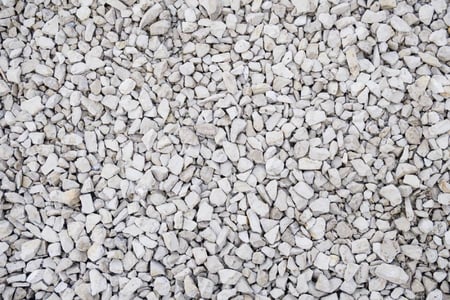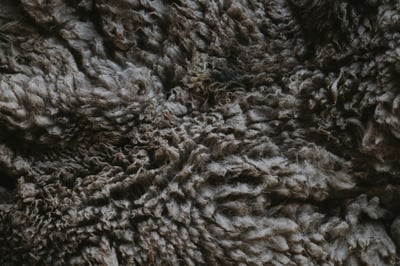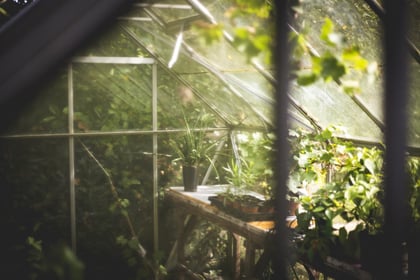
Green roofs require specific materials in order to protect the building roofing/waterproofing, retain/detain, and drain stormwater, and grow healthy plants. Here’s a quick rundown.
Looking at a green roof, it’s easy to imagine someone just stuck some plants and a little soil on top of a bare rooftop, dusted off their hands and called it good.
Because we can’t see underneath the surface, we often forget to think about the rest. Indeed, some professionals fail to use the proper materials or install green roof layers in the correct order.
That, we hardly need tell you, is no Bueno. No Bueno at all.
As with everything else, the first step is understanding. So here’s a quick look at the layers of a green roof, so you can be sure yours is performing and protecting as best it can.
Layer 1: Waterproofing Membrane
 Of the layers of a green roof, the first is the most important to the survival of the building envelope. Few of nature’s tools are as destructive over time as water. (We’re looking at you, Grand Canyon.)
Of the layers of a green roof, the first is the most important to the survival of the building envelope. Few of nature’s tools are as destructive over time as water. (We’re looking at you, Grand Canyon.)
It goes without saying that we should not create large water-holding systems on rooftops without protecting the roof from them, which is where the waterproofing membrane comes in.
This sturdy material is the most important layer of any green roof. A green roof that leaks (no matter how beautiful), is a failed green roof. Waterproofing membranes come in many different formats and installation methods. They may be torched down or hot mopped, fluid applied or laid down in preformed sheets.
Redundancy and resiliency are key attributes when evaluating waterproofing membranes.
Layer 2: Root Barrier
As with water, you don’t want roots digging into your roof. Not only does this mean the roots have punctured the waterproofing membrane, erasing its efforts, but the roots themselves can cause serious structural damage. You need a barrier.
This barrier is typically made from a flexible material (typically Linear Low Density Polyethylene aka LLDPE) that turns away roots, but contains no chemicals or compounds that might react negatively with the rooftop, soil or plants.
Layer 3: Drainage Layer
 The drainage layer’s primary focus is to move excess water to a drain or scupper, and ultimately off the roof. There is a delicate balance between too much and not enough drainage.
The drainage layer’s primary focus is to move excess water to a drain or scupper, and ultimately off the roof. There is a delicate balance between too much and not enough drainage.
This is why there is no “one size fits all solution.” Determining the best drainage layer involves many factors, including:
- The slope of the roof
- Drain quantity and location
- Desired stormwater retention/detention
- Load capacity
These all play a role in determining the best drainage layer for a particular project.
One of the most important tasks fulfilled by green roofs is to retain and detain stormwater. That means, respectively, that they hang onto it or slow it down – usually on its way to sewers or natural waterways. While on the roof, it is available to plants and then leaves the roof through evapotranspiration (the combined process of evaporation and plant transpiration).
Layer 3.5: Optional Water Retention Layer
 A water retention layer is optional, but a good idea, so much so that it is starting to become an integral part of everyday green roof design. The increased demand for roofs to hold more water means this component grows ever more necessary.
A water retention layer is optional, but a good idea, so much so that it is starting to become an integral part of everyday green roof design. The increased demand for roofs to hold more water means this component grows ever more necessary.
Slowing Stormwater and Avoiding Peak Runoff
During a rain event, the first few hours are always the most taxing on stormwater infrastructure. The goal, therefore, is to delay the runoff from the roof as long as possible. On a green roof, it’s already traveling through plants, substrate and drainage layer. If you add a water retention layer, it takes even longer.
Better still: It can make the roof invisible. In other words, if you look at an aerial map of the city during a rain event and measure how much is making it to the street below and funneling into combined sewers or natural waterways, the square footage of that roof produces none. It cancels the water out entirely. As far as stormwater is concerned, it is invisible.
Now, that’s not realistic in some of the rain events we experience. Nevertheless, even the thinnest green roof profiles delay stormwater, anywhere from half an hour on up. Note that the peak stormwater runoff – the water that makes it down to ground level – doesn’t always occur during the first flush of a rain event, but often takes minutes to hours to reach that high point. Anything we can do to slow stormwater down will minimize that peak runoff, and therefore the stress on combined systems.
 Keeping Roofs Wet to Keep Cities Dry
Keeping Roofs Wet to Keep Cities Dry
Counterintuively, the water retention layer may serve another purpose: keeping the green roof wet so that it can absorb more stormwater.
That’s right; a lot of research shows that completely dry roofs don’t perform as well in rain events because they don’t have the moisture buildup needed to create the surface tension required to hang onto water. A water retention layer can pre-wet the roof, priming it to suck up water when it rains down. Then you hold onto it until plants use it or it evaporates, readying it for the next rain event. It’s a closed-loop system … and who doesn’t love those?
For now, the water retention layer is an optional one. It’s not currently present in every system, and some people argue that plants and media are retention enough. However, as stormwater regulations become more and more robust and the requirements for stormwater capacity rise, water retention layers are becoming less an option and more a mandate. It’s smart to get out in front of the requirement.
So what does this layer look like? Actually, there are quite a few materials from which you can choose, including:
- Mineral wool
- Foam
- Lightweight aggregate
- Heavy duty fabrics
Some of these layers store the water instead, making it available to plants for later. Whether and how much they do that is dependent on the weight constraints of the building.
Layer 4: Filter Fabric
While green roofs are awesome, they would only contribute to stormwater ills if they were to add a bunch of soil, organic compounds or other media to runoff. The fact that water first travels through the plant and media layers isn’t bad, of course, since that purifies the water by removing chemicals, toxins and disease.
Still, you wouldn’t want a bunch of particles getting through to clog up sewers and water treatment plants (more than they already are). Plus, it would quickly lead to clogged green roof drains, turning your rooftop into a bathtub.
Not what we would call sustainable.
That’s where filter fabric comes in. This layer is designed to reduce silts, organics and other particles leaving the system. Water that trickles down through plants and soil or growing media hits the cloth, where suspended particles are caught and filtered out, letting only clean water through.
Layer 5: Growing Medium
Of the layers of a green roof, none matter to the healthy growing of plants more than the growing media. Depending on the rooftop, plant profile and individual designer, this may consist of “real” soil or some form of engineered growing medium, which could mimic soil.
This layer also serves as extra water-retaining material, helping to lighten the stormwater load.
Layer 6: Plants
 Of all the layers of a green roof, obviously the top layer is the most prized and offers the most room for creativity.
Of all the layers of a green roof, obviously the top layer is the most prized and offers the most room for creativity.
The ways in which plants can be arranged are myriad, making for endless possibilities when it comes to the design, aesthetic and function of green roofs. Since so many native plants thrive on rooftops, it’s relatively easy to find a mix that will survive in almost any environment.
Some are designed to make use of deeper “intensive” soils, while others can grow happily in 3 or even 2 inches, which is often what we’re working with around the edges of roofs. These are known as “extensive” environments, usually any roof that uses 6 inches or less soil or media.
Additional factors, such as shade or sun, moisture content or the needs of the building, all play in to the types of plants you might choose as well.
Plants are grown either in greenhouses or outdoor nurseries and brought onto the rooftop during more temperate times of year, the better to help them get established. (If you’d like to familiarize yourself with some of the best native nurseries in the Midwest, try Pizzo Native Plant Nursery, Prairie Moon Nursery and North Creek Nurseries!)
The bottom line is, you’ll need an expert to help you choose the right plant mix for you, as well as deal with the underlying layers of a green roof that make it work as well as possible. Ready to get started?
Great. We’re ready too. Get in touch today.

